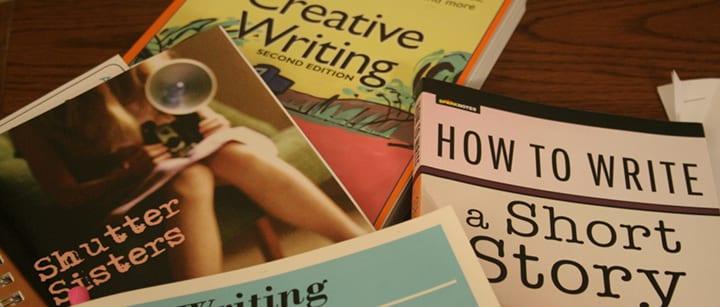 Does your child love to write? Do the words on the paper help your child express a unique point of view, give voice to thoughts and feelings, and make others think differently? Supporting your child’s passion for writing can be as simple as giving them creative writing books that offer kid-focused writing instruction or models of high-quality writing. These books may serve a variety of purposes, such as providing inspiration, modeling how to convey an authentic voice to a reader, and offering examples of unique organizational structures.
Does your child love to write? Do the words on the paper help your child express a unique point of view, give voice to thoughts and feelings, and make others think differently? Supporting your child’s passion for writing can be as simple as giving them creative writing books that offer kid-focused writing instruction or models of high-quality writing. These books may serve a variety of purposes, such as providing inspiration, modeling how to convey an authentic voice to a reader, and offering examples of unique organizational structures.
Here are some of our favorite creative writing books for kids:
-
Write Your Own Story Book by Louie Stowell. This activity book offers young writers tips, hints, and writing tasks for crafting their own stories. The first part of the book is dedicated to techniques and methods that children can use to create characters, craft story lines, think of story ideas, write from a variety of viewpoints, and detail the story’s setting. The second part of the book offers inspiration and story themes to write about. Each page has plenty of lined space so children can record their inspirations, jot down notes for a future story, or begin the writing process directly in the book.
-
Spilling Ink by Anne Mazer and Ellen Potter. Mazer and Potter, both acclaimed children’s book authors, join forces here to offer writing advice for kids. This guidebook walks youngsters through the process of crafting a story, offering tips on a variety of writing topics, including developing characters, finding a voice, making revisions, and overcoming writer’s block. There are plenty of fun prompts that will get children thinking and writing!
Of course, using creative writing books to help your child learn to write isn’t limited to just instructional texts. The world of children’s literature is full of stories that are ideal for teaching specific writing traits. Mentor texts allow children to explore good writing within a specific framework and structure. These concrete examples of quality writing traits can provide inspiration and points of reference for young writers. Our favorite mentor texts include:
-
Come On Rain! by Karen Hesse. This beautiful picture book tells the story of a summer downpour after an oppressive heatwave in the city. Your child can use this picture book as inspiration for outstanding word choice, such as using sensory words, crafting imagery, and repeating powerful words or phrases.
Gone Fishing: A Novel in Verse by Tamera Will Wissinger. Young Sam loves to go fishing with his dad, but he is not pleased when his younger sister wants to join the trip. This book of poems tells the story of the fishing trip, details the sibling interaction, and underscores the power of family. Each poetic form is labeled, and the “Poet’s Tackle Box” at the end of the story provides additional opportunities for learning about poetic forms.
The Kid Who Invented the Popsicle: And Other Surprising Stories About Inventions by Don L. Wulffson. This collection of true stories details how many common inventions came to be and can serve as a mentor text for children on informational writing. Kids will learn that informational text doesn’t have to be boring but instead can be informative and fun at the same time! These short explanations of unique inventions will keep kids’ interest and provide plenty of inspiration for crafting their own pieces of informational writing.
The Paperboy by Dav Pilkey. This story of a young boy and his dog on an early morning paper route serves as a mentor text for focusing a story on a single small moment in time. Instead of telling all about the boy’s job delivering newspapers, Pilkey focuses on a small moment of one morning. This allows him to share specific information and intimate details to craft a beautiful story. Children will learn the power of focusing on one small moment instead of trying to write a story with too big of an idea.
Using creative writing books is a great way to provide examples of different writing traits for your budding writer. Your child will love reading the books, writing stories inspired by the books, and incorporating the traits and techniques into their work.
Photo by Jinx!
Jill Cole

